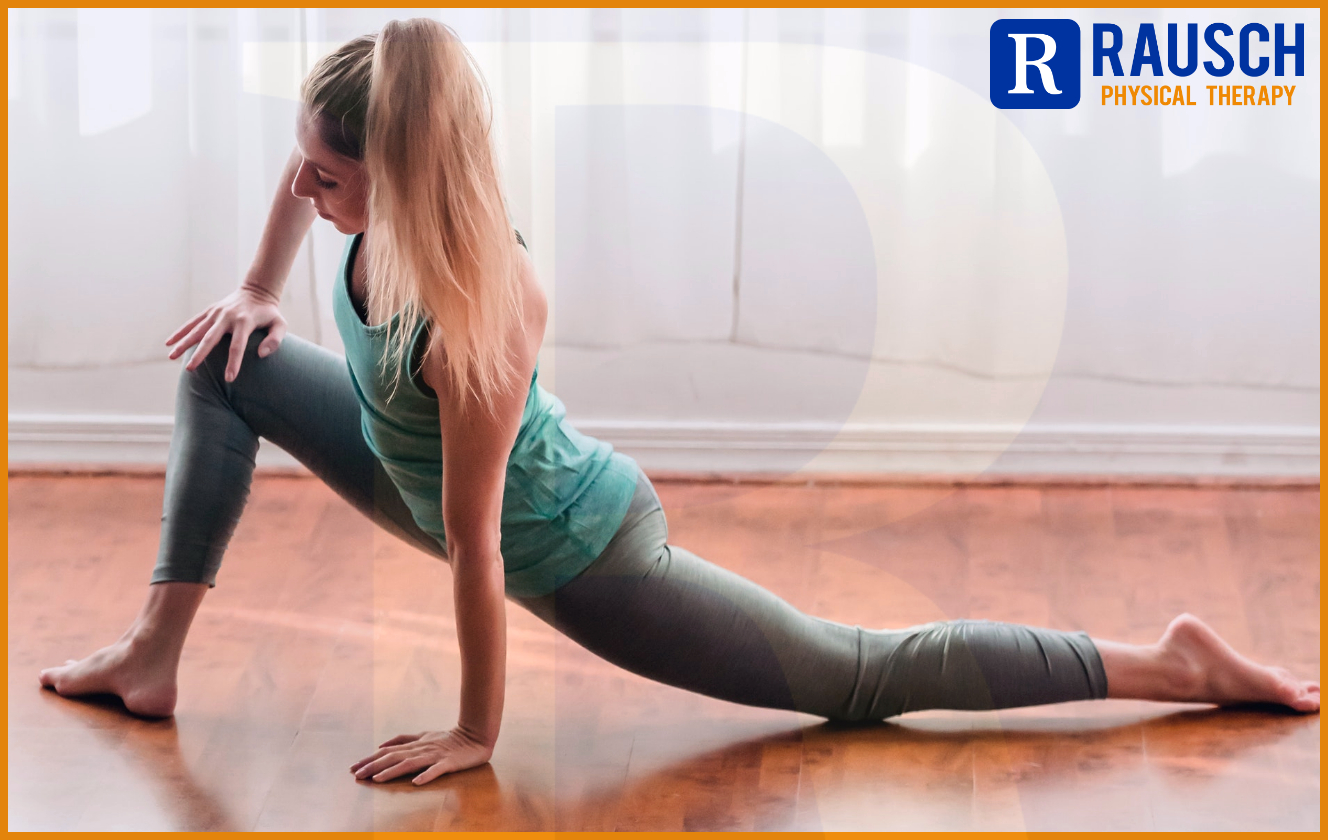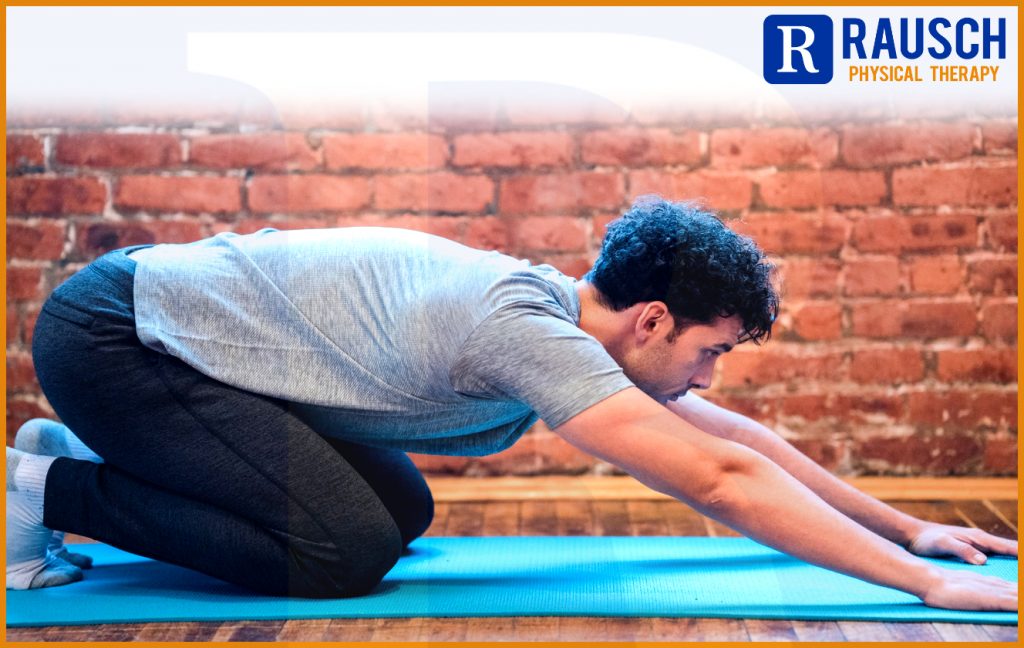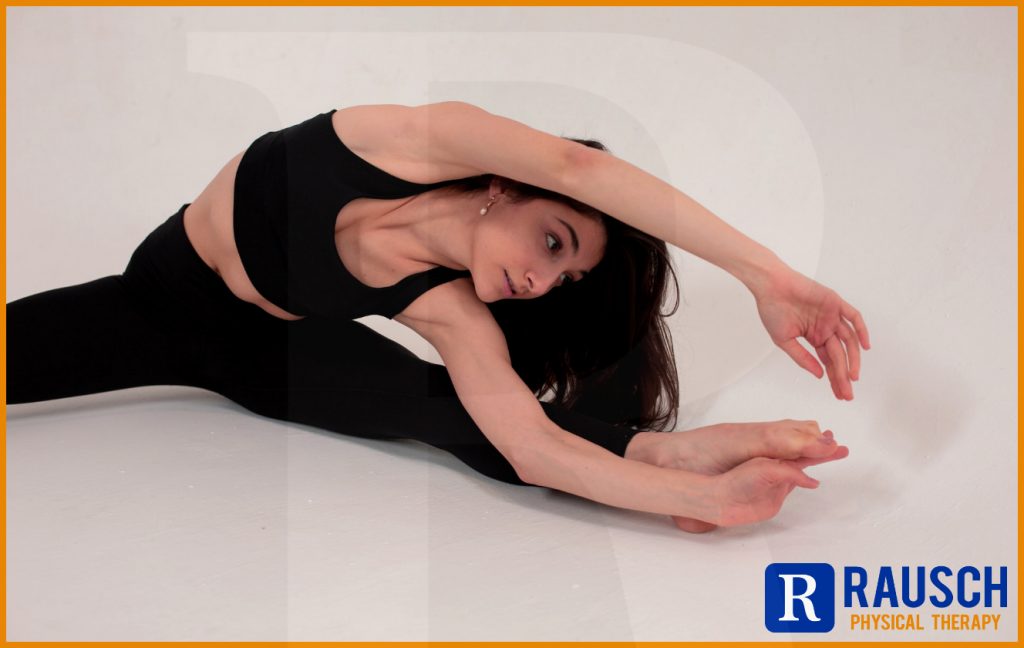Health and Fitness Benefits of Flexibility Training
May 26, 2021 2:57 pm / Category: Physical Therapy , Uncategorized

Can you touch your toes? Do a deep squat? If you classify yourself amongst the most inflexible people, remember that doesn’t get you off the hook as everyone can become flexible by putting some time into it. Flexibility is a skill that you can work on and improve at any age — and it should not be overlooked. It’s a key to whole-body health! Here is a helpful article with everything you need to know to work on your flexibility.
Flexibility is the range of motion in a joint or group of joints, or the ability to move joints effectively through a complete range of motion. Flexibility training includes stretching exercises to lengthen the muscles and may include activities like yoga or tai chi. Improving your flexibility can help you move more comfortably throughout the day.
Flexibility and Range of Motion
Flexibility training is stretching—lengthening and loosening muscles and connective tissues to improve flexibility. You probably know what it means when someone says they are flexible. It usually means that they can reach down and touch their toes or bend deeply into a squat. But the definition of flexibility is more complicated than simply being able to do a single stretch. True flexibility is the ability to move through a range of motion without pain.
Hyperflexibility (being too flexible) is a concern for some people, as it can cause instability in the joints. People who experience this need resistance training to strengthen muscles and joints.
That means that each joint and each group of muscles in your body might have a different range of motion (ROM) or a different level of flexibility. Range of motion is a measurement of how much a joint can move, both in terms of distance and direction. Along with other factors, your muscles’ ability to relax or contract affects your range of motion. If your muscles are inflexible, then your range of motion could be less than it should be.
Some areas of your body may be very tight, meaning that the muscles feel short and restricted. Some areas of your body may feel very loose, and you may be able to lengthen and move those muscles freely.
For example, you might be very flexible in the hamstrings, allowing you to bend over and touch your toes. But your thigh muscles (quadriceps) might be tight (inflexible), so it may be harder for you to stand up straight or bend backward. It’s vital to have balanced flexibility between the right and left of your body, and front and back.
Many people who work in an office develop inflexible hips as a result of sitting all day. This is one of the reasons that health experts recommend that you stand up and move for a few minutes every hour.
Benefits of Flexibility
Being flexible is a key aspect of physical health. With appropriately flexible tissues, your joints can move more freely, allowing more functional movement patterns. You’ll also be more likely to have the range of motion necessary to perform strength training exercises to their full potential, allowing for better results. Some benefits of flexibility training include:
- Reduces injury risk
- Lessens the risk of falls
- Prevents and corrects muscle imbalances
- Improves posture
- Enhances joint range of motion
- Improves athletic performance
- Combats the effects of sitting for long periods
- Reduces joint pain and strain

Types of Flexibility Training
There are different types of stretching to improve flexibility. Each has a slightly different purpose.
Static Stretching
You move into a position that lengthens a target muscle and hold the position for 15-60 seconds. It’s best to remember to breathe as you hold each stretch. Static stretching typically should only be done after muscles are warmed up, so do it after a workout. If stretching is the main workout, make sure it’s preceded by a proper warm-up. Some recent research suggests that short-duration static stretches are safe before a workout for most people—just not high-performance athletes.
Dynamic Stretching
You move in and out of a position that lengthens a target muscle. Dynamic stretching involves moving through a joint’s full range of motion either slowly or quickly to mimic a functional activity. Examples would be bodyweight squats or lunges, arm and leg swings, or hip circles.
Active Isolated Stretching (AIS)
Active isolated stretching is a technique that involves contracting the opposite muscle from the one you are stretching, holding it for two seconds, then relaxing, and repeating 8 to 10 times. The muscle contraction sends a signal to the opposite muscle to relax, letting you stretch more effectively without discomfort. Many athletes and active exercisers use active isolated stretching to prevent injuries or muscle imbalance.
Myofascial Release
Myofascial release exercises, such as foam rolling, can also help increase flexibility. It is thought that tight, tense areas in your body are due to adhesions of the fascia, a connective tissue. Using myofascial release can purportedly break up these adhesions, increase blood flow to the tissues, and release tension.
One type of stretching known as ballistic (bouncing) stretching is risky and not recommended as it has a higher potential to cause injuries.
How to Increase Flexibility
Stretching improves flexibility. But you don’t have to do hours of stretching to enjoy the benefits of flexibility training. You can take a stretching class or do an online video that focuses just on stretching exercises to improve range of motion throughout the body.
Many exercisers add a few minutes of stretching to the end of their daily workout to relax muscles and improve range of motion. Or you can take five to 10 minutes to stretch in the morning after you get out of bed. Just a few minutes of flexibility training each day can provide benefits.
For example, a lunge exercise strengthens the quadriceps on one leg but lengthens (stretches) the hip joint on the other. Different swimming strokes increase flexibility in the upper back and torso. And walking strengthens the lower body but also increases flexibility in the hip joint.
Another way to improve flexibility is to do various cardio and strength training exercises. Flexibility is inherent in many other activities such as yoga, pilates, and mobility work.
Never stretch to the point of pain; don’t force or overdo any movements. Improved flexibility will come with time and regular practice.
A Word From Verywell
Exercisers who include flexibility training as part of a balanced fitness program enjoy many benefits. Stretching exercises can help decrease stress and improve the way your body moves and feels throughout the day. Improved flexibility can even lead to better posture.
All of these benefits help you to move more often throughout the day and burn more calories. So if you’re trying to lose weight, it’s smart to include flexibility exercises in your weight loss program.
Reference: {https://www.verywellfit.com/flexibility-definition-and-examples-3496108}
Work with a physical therapist to improve your flexibility and range of motion. Rausch PT physical therapists help to prepare your body for whatever it is you want to try next. Keep moving and living life to the fullest. Give us a call at 949-276-5401 or find us on Facebook at https://www.facebook.com/rauschpt/. Don’t forget: there’s no prescription needed to see a PT in California.
If you find yourself in discomfort or think you could benefit from a personalized exercise plan, talk to a Physical Therapist.
Let’s talk! We are here to help. Give us a call for a complimentary assessment. Did you know there’s no prescription needed from a doctor to see us? (949) 276-5401




